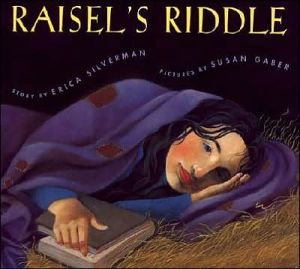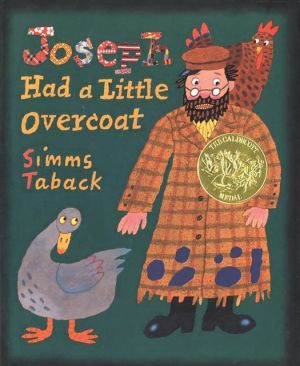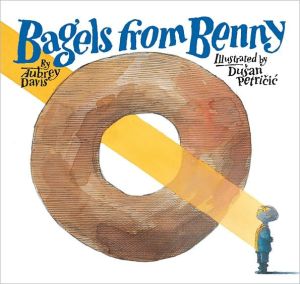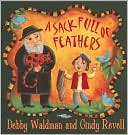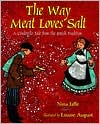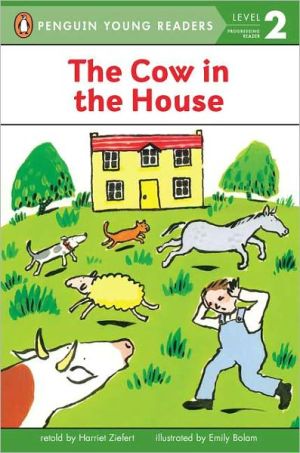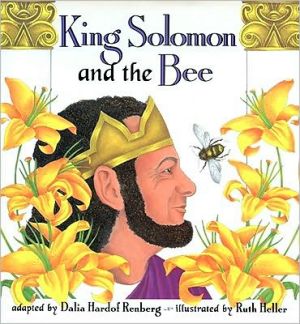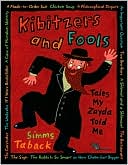Raisel's Riddle
A Jewish Cinderella\ What's more precious than rubies, more lasting than gold?\ Raisel knows. She learned it from her grandfather, a poor scholar who taught her. When he dies, Raisel finds work in the home of a rabbi. His jealous cook makes Raisel toil from sunup to sundown. And as the Jewish holiday of Purim approaches, Raisel works even harder. The rabbi's son presides over the Purim dinner, and Raisel listens closely when he responds to riddles posed by his guests. Is it possible that this...
Search in google:
What's more precious than rubies, more lasting than gold? Raisel knows. She learned it from her grandfather, a poor scholar who taught her. When he dies, Raisel finds work in the home of a rabbi. His jealous cook makes Raisel toil from sunup to sundown. And as the Jewish holiday of Purim approaches, Raisel works even harder. The rabbi's son presides over the Purim dinner, and Raisel listens closely when he responds to riddles posed by his guests. Is it possible that this young man can answer Raisel's riddle? Erica Silverman's lively retelling of the Cinderella story features a heroine for whom knowledge is as essential to happiness as love. In striking paintings, Susan Gaber captures all her beauty, external and internal.Horn Book MagazineSilverman's Cinderella is no victim suffering helplessly before the hearth. Although Raisel must labor as the nasty cook's helper in the rabbi's home where she finds employment after her grandfather's death, she has been taught well by her Zaydeh about the value of study: "It is written that learning is more precious than rubies, more lasting than gold. Rubies may be lost and gold stolen, but what you learn is yours forever." The jealous cook shuts Raisel out from the Purim festivities as she lingers listening to the celebrants tell riddles, yet Raisel's kindness to a beggar woman, a stand-in for her godmother, wins her reentry as the transformed and beautiful Queen Esther. But it is Raisel's intelligence, not her beauty, that entrances the princely Rabbi's son. She turns her Zaydeh's truth about the value of study into a riddle that she poses to the rabbi's son, and it is the riddle-no glass slippers here-that will identify the woman he seeks as his bride when Raisel disappears at midnight. (And, once he finds her, the rabbi's son must answer her riddle before she will agree to marry him.) Artist Gaber conveys a folkish simplicity with a sophisticated line to evoke a Poland of dreams and reality in which, at book's end, the happy couple float Chagall-like among flower blossoms, living and learning "happily ever after."
\ Horn Book MagazineSilverman's Cinderella is no victim suffering helplessly before the hearth. Although Raisel must labor as the nasty cook's helper in the rabbi's home where she finds employment after her grandfather's death, she has been taught well by her Zaydeh about the value of study: "It is written that learning is more precious than rubies, more lasting than gold. Rubies may be lost and gold stolen, but what you learn is yours forever." The jealous cook shuts Raisel out from the Purim festivities as she lingers listening to the celebrants tell riddles, yet Raisel's kindness to a beggar woman, a stand-in for her godmother, wins her reentry as the transformed and beautiful Queen Esther. But it is Raisel's intelligence, not her beauty, that entrances the princely Rabbi's son. She turns her Zaydeh's truth about the value of study into a riddle that she poses to the rabbi's son, and it is the riddle-no glass slippers here-that will identify the woman he seeks as his bride when Raisel disappears at midnight. (And, once he finds her, the rabbi's son must answer her riddle before she will agree to marry him.) Artist Gaber conveys a folkish simplicity with a sophisticated line to evoke a Poland of dreams and reality in which, at book's end, the happy couple float Chagall-like among flower blossoms, living and learning "happily ever after."\ \ \ \ \ Publishers Weekly\ - Publisher's Weekly\ Starring a Jewish orphan in a long-ago Polish village, this colorful, expertly structured variation on Cinderella offers many things: an independent-minded heroine plus a hero attracted by wisdom and virtue; a fairy-tale patina plus old-world ambiance; and a tie-in to Purim that grounds the story without limiting its appeal. Raisel is not immediately recognizable as a Cinderella type. Raised by her grandfather, a poor but devout scholar, she has studied right alongside him. When he dies, she finds work in a faraway village as the helper to a rabbi's cook, a jealous and harsh woman who could rival any evil stepmother. Silverman (Don't Fidget a Feather) maintains impeccable pacing, characterization and once-upon-a-time diction as Raisel catches the eye of the rabbi's learned son, and, through an act of kindness, earns three wishes on Purim. Enter a costume and magical transportation, and the Cinderella parallel pops out, to surprise and delight young readers. Raisel uses her wishes wisely and wins the love of the rabbi's son; unlike Cinderella, this maiden sets a test for her beloved, and it brings the story full-circle to its flavorful beginnings. Gaber (Bit by Bit) underscores the text's emphasis on the characters' inner resources. Her paintings find the warmth in Raisel's companionship with her grandfather, despite the modest surroundings, and they pay more attention to Raisel as a scullery maid than to her appearance in the magical costume. A splendid story, intelligently served. Ages 5-8. (Mar.)\ \ \ Publishers Weekly"Starring a Jewish orphan in a long-ago Polish village, this colorful, expertly structured variation on Cinderella offers an independent-minded heroine and a tie-in to Purim that grounds the story without limiting its appeal," wrote PW in a starred review. Ages 5-8. (Mar.) Copyright 2003 Reed Business Information.\ \ \ \ \ Children's Literature\ - Lois Rubin Gross\ Cinderella meets Rachel the Clever in this non-traditional tale for the Jewish holiday of Purim. The rabbi's princely son discovers ragged Raisel to be his mental match when she poses riddles that challenge even his scholarly mind. The prince's ball is transformed into a Purim party where Raisel dresses as Queen Esther and spouts Talmud learned at her grandfather's knee. The book presupposes a knowledge of Purim customs, but even newcomers will recognize the story strands woven together in a new way.\ \ \ \ \ School Library JournalK-Gr 3-In this Jewish holiday variant of the Cinderella story, Raisel, the granddaughter of a learned scholar, uses her wits to win the rabbi's son. After Raisel's grandfather dies, the orphaned girl moves from her Polish village to a large city and goes to work in the kitchen of a rabbi. On the night of the Purim ball, she feeds an old woman who gives her three wishes for her kindness, thus allowing Raisel to attend the ball and tell the rabbi's son a riddle that wins his heart. Using elements from the classic tale and ideas from the Talmud, Silverman crafts a story that teaches the importance of learning while retaining the romance of the fairy tale. The quotes from the Talmud blend in well with the rest of the narration and the themes reappear in the art. Gaber's pictures are uneven, with Raisel looking different from page to page, but at their best, the composition is lovely and the realistic paintings with their smears of bright colors beautifully reflect the emotions of the text. The artist plays with point of view, setting her illustrations at all different angles and distances, some of which are more effective than others. However, as a whole, the book works, and while not a necessary purchase, it will be a welcome addition where more folklore with a Jewish focus is needed.-Amy Lilien, Ferguson Library, Stamford, CT\ \ \ \ \ Kirkus ReviewsSilverman (The Halloween House, 1997, etc.) tells of Raisel, an orphan girl who is raised by her scholarly grandfather until his death; three wishes from an old beggar woman allow Raisel to attend the Purim play dressed as Queen Esther, where she captures the attention of the rabbi's son. It is her clever riddle about the precious nature of learning, however, that eventually wins his heart. Carefully crafted, this story not only entertains, but it teaches readers about the Jewish holiday, Purim, Queen Esther, and the tradition of costumed re-enactment. Unlike a majority of the other versions of the Cinderella story, this one does not include a self-absorbed prince who combs the countryside looking for a bride of a particular shoe size; refreshingly, Silverman's hero is as intelligent as he is handsome, and seeks a bride who is his equal. Graber's illustrations are the perfectly complement, embodying Raisel's transformation from a life of servitude to one of riches "more precious than rubies." (Picture book. 5-8) .\ \
